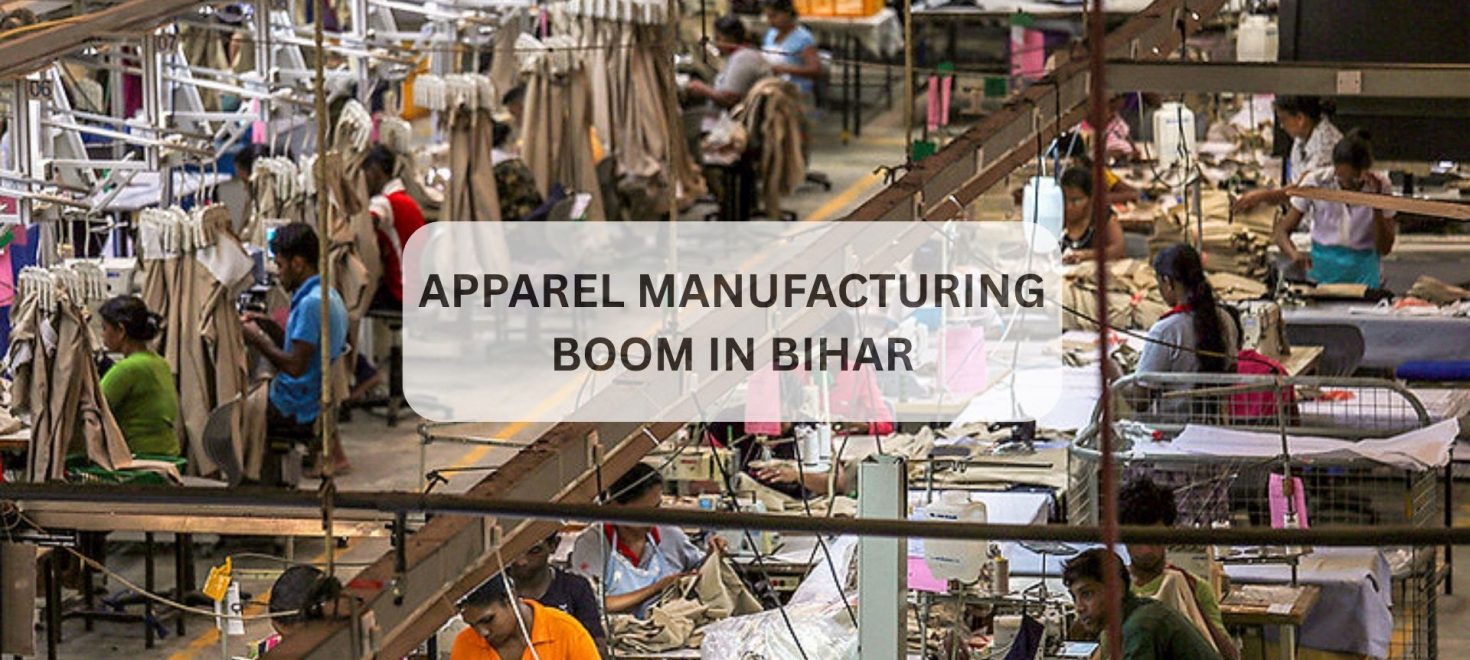Introduction: A New Chapter for Bihar’s Economy
Bihar, a state often synonymous with agriculture, labour migration, and cultural heritage, is now quietly emerging as one of India’s promising destinations for apparel and textile manufacturing. While the state has historically contributed to the country’s labour force that powers established hubs like Tirupur, Ludhiana, and Delhi NCR, the narrative is beginning to shift.
Thanks to a unique blend of affordable, skilled labour, progressive government policies, improving infrastructure, and a growing preference for domestic sourcing, Bihar is positioning itself as the next growth engine for India’s apparel sector. From Patna to Muzaffarpur, Darbhanga to Bhagalpur, a textile-driven transformation is taking shape, creating thousands of jobs and breathing new life into rural economies.
At Groyyo Consulting, with our deep commitment to manufacturing excellence across India, Bangladesh, and Vietnam, we view Bihar’s apparel boom as a strategic opportunity—both for the industry and for inclusive, sustainable development.
Why Bihar is Emerging as a Competitive Garment Manufacturing Hub
The rapid expansion of Bihar’s garment industry is not a coincidence. The state offers manufacturers and investors several critical advantages that make it an attractive destination for apparel production:
Key Drivers for Growth
- Abundant Cost-Competitive Workforce: Bihar’s vast labour pool, with competitive wage structures and a strong tradition of craftsmanship, makes it ideal for labour-intensive manufacturing like garments and textiles.
- Strategic Location & Market Access: Proximity to major consumption centres such as Delhi, Kolkata, Uttar Pradesh, and Jharkhand reduces transportation time and costs, ensuring faster deliveries to both domestic and export markets.
- Policy Support through BIIPP: The Bihar Industrial Investment Promotion Policy (BIIPP) offers capital subsidies, land allotments, tax incentives, and dedicated skill development programs to encourage apparel investments.
- Enhanced Connectivity: With ongoing infrastructure projects like the Eastern Freight Corridor, Bihar’s access to raw materials and finished goods markets is improving significantly, reducing logistical bottlenecks.
- Availability of Industrial Land: The state has earmarked large parcels of land for industrial development, including textile parks and garment clusters designed to house modern factories.
The Numbers Tell the Story: Bihar’s Apparel Sector is Scaling Rapidly
| Indicator | 2020 | 2025 (Projected) | Growth |
|---|---|---|---|
| Operational Apparel Units | 12 | 40+ | ↑ 230% |
| Jobs Created | 2,500 | 15,000+ | ↑ 500% |
| Women Participation | 30% | 50% | ↑ 20% |
| Average Operator Wage | ₹8,000–10,000 | ₹10,000–12,000 | ↑ 25% |
| Training Centres Established | 5 | 20+ | ↑ 300% |
| Govt. Investment in Sector | ₹50 Cr | ₹200 Cr+ | ↑ 4× |
Source: BIIPP, MSME Ministry, ATDC India (2020–2025 Projections)
The data clearly highlights that Bihar is not only creating manufacturing capacity but also focusing on skill development, wage improvement, and gender-inclusive growth.
Employment Opportunities: Catalysing Rural Economic Transformation
The rise of garment factories is generating diverse employment opportunities across Bihar’s districts, directly contributing to job creation and rural development. Roles in demand include:
- Sewing Machine Operators
- Embroidery & Handwork Artisans
- Fabric Cutters & Finishers
- Quality Controllers & Line Supervisors
- CAD Pattern Makers & Technicians
A defining feature of this growth is the emphasis on women’s workforce participation, which is steadily increasing as factories actively recruit and train local women. This shift is leading to improved household incomes, greater financial independence for women, and enhanced social mobility in traditionally underserved communities.
Case Study: Bhagalpur Apparel Factory – A Scalable Rural Success Model
- Factory Capacity: 200 advanced sewing machines
- Local Jobs Created (Phase 1): Over 500
- Women Workforce Participation: 60%
- Village Training Centre: Equipped with 25 sewing machines, providing skill development to nearby rural youth and women
- Focus Products: Bridalwear and ethnic garment exports for domestic and global markets
This project, a Public-Private Partnership (PPP) between a Delhi-based apparel manufacturer and the Bihar government, has become a model for other districts. Its success proves that with the right policy support, infrastructure, and private investment, rural Bihar can drive large-scale apparel manufacturing and inclusive job creation.
Challenges to Overcome for Sustainable Growth
- Inconsistent Power Supply: Rural areas continue to face unreliable electricity, affecting factory productivity and increasing operational costs.
- Transport & Logistics Gaps: Limited warehousing, last-mile connectivity issues, and inadequate cold chains constrain supply chain efficiency.
- Worker Retention & Upskilling: High attrition rates and gaps in advanced skill development limit workforce stability and productivity improvements.
- Supervisory & Mid-Management Shortages: There is an urgent need to build local talent pipelines for supervisory, quality control, and managerial roles.
Groyyo Consulting’s experience across India, Bangladesh, and Vietnam highlights that addressing these challenges through structured training, lean process optimization, and strategic workforce development is essential to unlocking Bihar’s full potential.
The Future Outlook: Bihar as India’s Eastern Apparel Powerhouse
The global apparel industry is undergoing a seismic shift. With brands adopting “China +1” sourcing strategies, India’s “Make in India” push, and growing consumer demand for ethically produced, domestically sourced garments, states like Bihar are well-positioned to capitalise.
Moreover, as urban garment clusters face land and labour cost pressures, rural manufacturing hubs like Bihar offer scalable, cost-efficient alternatives for brands seeking resilience and speed-to-market advantages.
The collaborative efforts between the state government, private sector, skill development agencies, and consulting partners like Groyyo can drive:
- Accelerated factory setups
- Investment in rural infrastructure
- Advanced skill training programs
- Greater female workforce participation
- Strengthened supply chain ecosystems
With the right interventions, Bihar has the potential to become a textile and garment manufacturing leader in Eastern India, contributing to national employment targets, reducing outmigration, and fostering inclusive economic growth.
Stitching Opportunity, Empowering Communities
Bihar’s apparel manufacturing boom is more than an industrial success—it represents a socio-economic transformation at scale. By generating jobs, empowering women, and revitalising rural economies, the sector is reshaping Bihar’s development narrative.
For apparel manufacturers, brands, investors, and stakeholders, Bihar presents an untapped growth opportunity with competitive advantages and strategic relevance in the evolving global supply chain.
At Groyyo Consulting, we remain committed to enabling manufacturing excellence, enhancing operational efficiency, and fostering sustainable, inclusive growth across the apparel sector in India, Bangladesh and Vietnam. Bihar’s evolving garment ecosystem is a testament to what strategic collaboration, innovation, and grassroots empowerment can achieve.

Aditya Kumar
Senior Consultant


Leave a Comment